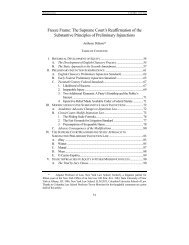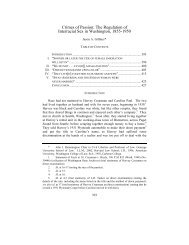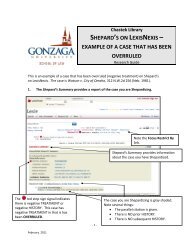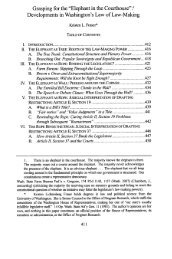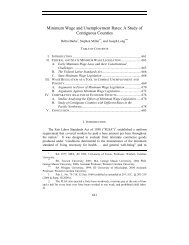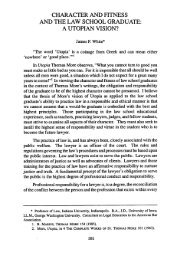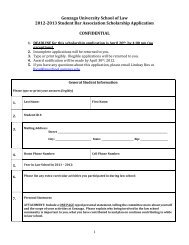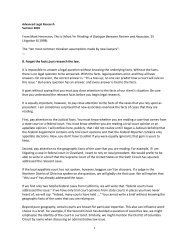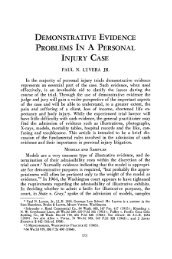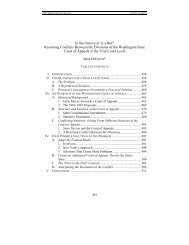professional responsibility, student practice, and the clinical
professional responsibility, student practice, and the clinical
professional responsibility, student practice, and the clinical
You also want an ePaper? Increase the reach of your titles
YUMPU automatically turns print PDFs into web optimized ePapers that Google loves.
1990/911<br />
STUDENT PRACTICE<br />
IV. CONCLUSION<br />
Law <strong>student</strong>s will better underst<strong>and</strong> <strong>the</strong> role <strong>and</strong> <strong>responsibility</strong> of being<br />
a lawyer through <strong>the</strong> assumption of <strong>responsibility</strong> for real clients under a<br />
properly structured model of <strong>clinical</strong> supervision. The <strong>clinical</strong> teacher needs<br />
to be sensitive to both <strong>the</strong> <strong>student</strong>'s educational needs <strong>and</strong> <strong>the</strong> teacher's<br />
<strong>professional</strong> obligations to <strong>the</strong> client. Student <strong>practice</strong> rules, <strong>professional</strong><br />
conduct codes, <strong>and</strong> law school <strong>clinical</strong> education guidelines do not precisely<br />
guide <strong>the</strong> <strong>clinical</strong> teacher in determining when it is necessary to actually "take<br />
over" direct client representation in order to assure competent representation<br />
<strong>and</strong> compliance with m<strong>and</strong>ated st<strong>and</strong>ards of <strong>professional</strong> conduct.<br />
Some <strong>clinical</strong> teachers will emphasize <strong>the</strong>ir role as teachers <strong>and</strong><br />
intervene only when necessary to prevent irreparable harm to <strong>the</strong> client.<br />
O<strong>the</strong>rs will interpret <strong>the</strong>ir role as lawyer as requiring more proactive direct<br />
intervention when <strong>the</strong> <strong>student</strong>'s performance is minimally competent but<br />
seriously departs from <strong>the</strong> way <strong>the</strong> teacher would perform <strong>the</strong> particular<br />
lawyering activity. Because <strong>clinical</strong> representation is complicated by<br />
numerous <strong>student</strong>, client, case, <strong>and</strong> teacher variables, it is difficult to prescribe<br />
specific st<strong>and</strong>ards to govern teacher intervention. However, core values<br />
relevant to <strong>the</strong> question can be gleaned from <strong>professional</strong> conduct rules.<br />
These include considerations which focus on client expectations, <strong>student</strong><br />
competency, teacher competency, <strong>and</strong> <strong>the</strong> interest of <strong>the</strong> client <strong>and</strong> o<strong>the</strong>rs in<br />
minimizing delay, financial costs, <strong>and</strong> emotional discomfort. Conscientious<br />
<strong>clinical</strong> teachers should attempt to balance <strong>the</strong>se considerations in an effort to<br />
ensure that intervention decisions reflect proper <strong>professional</strong> <strong>responsibility</strong><br />
concerns.



